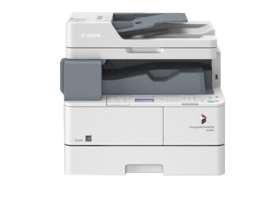Glanbia Company Management and Organisation Structure
|
Tutor: Sheila Cuddihy |
|
A REPORT ON GLANBIA |
|
A Brief Outline of the Organisation |
|
Seán Costelloe |
|
3/03/17 |
|
A commissioned report by Kilkenny and Carlow Education and Training Board |
Table of Contents
Nomination and Governance Committee
Group HR and Corporate Affairs Director
Administration Functions of an office
Safety, Health and Welfare at Work Act 2005
Employment Equality Acts 1998 – 2008
Protection of Young Persons (Employment) Act 1996
The author has been asked to write this report on behalf of Kilkenny and Carlow education and training centre.
The author has used secondary sources throughout this report.
This report is in three sections the first section gives a brief history of Glanbia its legal form its current size and location around the world, and the products it produces. The second section describes the administration functions of an office and describes three pieces of equipment used to carry these functions. The third section gives a brief overview of three pieces of employment legislation.
Glanbia meaning “pure food” in Irish has its roots in the Irish co-operative movement. In the 1960’s many small co-operatives joined together, realising the benefits of increase scale and having greater diversification. Waterford Co-op Society was formed in 1964 with Avonmore Creameries formed two years later in 1966. With the introduction of European milk quotas in 1984 growth in domestic opportunities were restricted. Waterford Co-op Society and Avonmore Creameries both recognised that to expand they would have to look outside Ireland and the best way to fund this expansion was through a stock market flotation. Both were floated on the Irish Stock Exchange in 1988. With the capital raised leading to business expansion outside of Ireland. A number of small cheese plants in the USA being the basis of Glanbia marketing leading US Cheese business today. “On 4 September 1997, Avonmore Foods plc and Waterford Foods plc merged to form Avonmore Waterford Group (AWG) plc. The combined entity was the fourth biggest dairy processor in Europe and the fourth biggest cheese producer in the world.” In 1999, the business was rebranded and the name changed to Glanbia plc.
Organisation and Legal Form
 Glanbia is a private sector business enterprise, being floated on the Irish Stock Exchange on 4 September 1997. It was known then as Avonmore Waterford Group (AWG) plc and being renamed Glanbia plc in 1999.
Size and Location
Glanbia registered office is located in Glanbia House Kilkenny; it employs over 6,000 people across 32 countries and their products are sold or distributed in over 130 countries with an annual turnover of €3.6 billion. Their major production facilities are located in Ireland, the US, the UK, Germany and China. They have four segments; Glanbia Performance Nutrition, Global Ingredients, Dairy Ireland and Joint Ventures & Associates. Their shares are listed on the Irish and London Stock Exchanges (symbol: GLB).
Products

 Glanbia has a wide range of nutrition sports brands, “Glanbia Performance Nutrition (GPN) is the number one global performance nutrition brand portfolio comprising Optimum Nutrition, BSN, Isopure, thinkThin, Nutramino, ABB and trusource, each with its own brand essence.”
Glanbia has a wide range of nutrition sports brands, “Glanbia Performance Nutrition (GPN) is the number one global performance nutrition brand portfolio comprising Optimum Nutrition, BSN, Isopure, thinkThin, Nutramino, ABB and trusource, each with its own brand essence.”
It has also a wide range of dairy brands “Dairy Ireland is comprised of two businesses. Consumer Products is the leading supplier of branded consumer dairy products to the Irish market and long-life products for export. Agribusiness supplies inputs to the Irish agriculture sector and is the leading purchaser and processor of grain and the leading manufacturer of branded animal feed in Ireland.”
Audit Committee
The Audit Committee is responsible for assessing the Company’s financial arrangements, as well as reviewing the design and implementation of internal control and risk management. It also agrees the approach and scope of the internal and external audit and keeps under review the objectivity and independence of external auditors.
Two main functions of the Audit committee is the review of financial statements and external auditors, which involves monitoring the integrity of financial reports and assessing the efficiency of the internal and external audit process.
The second main function would be the reviewing and implementing the company’s risk management systems. Mainly assessing the principal risks that would threaten the company’s business model, future performance, solvency and liquidity.
Nomination and Governance Committee
The Nomination and Governance Committee is responsible for hiring individuals with the knowledge, experience and management skills needed to expand the business and deliver its strategic objectives.
Two main functions of the Nomination and Governance Committee are recommending new appointments to the board of directors.
The second would be the forward planning in the succession to the board.
Remuneration Committee
The remuneration committee has responsibility for putting in place a remuneration strategy, that is designed to meet the company’s strategic business ambitions and that attracts new talent and delivers long term sustainable shareholder value.
Two main functions of the remuneration committee, one is to review the executive salaries and benefits.
The second would be to seek approval the annual incentive targets.
Group Management Committee
The group management committee is responsible for delivering the company’s annual business plan and strategic priorities.
Two main functions
To research and analyse the potential markets for products to be sold.
To develop the growth of the company business, through strategic investments, and also with strategic acquisition or alliance with other complementary businesses.
Group finance director
The finance director has the responsibilities, for managing the department financial strategy ensuring the company delivers on key financial goals. To achieve these goals involves assessing both external and organic investment opportunities, cash conversion through improved working capital management and moderate business sustaining capital expenditure. Leveraging the company’s activities in order to improve cost structures utilising shared services, procurement, IT and maintaining the capital structure with an implicit investment grade credit profile.
Group HR and Corporate Affairs Director
Is responsible for man power planning, addressing any issues raised by employee’s, reviews HR operating model to ensure it is meeting the strategic goal of acquiring the talent needed to maintain company’s goals. Making sure there is a comprehensive succession and people talent review of senior leadership. Developing a comprehensive Code of Conduct to support commitments to ethical business practice,
The administrative function involves the collecting; storing and processing of data. The collecting of data involves many things such as reports, minutes of meeting, enquires, quotations, prices lists, invoices to name a few.
Storing of data depends on the nature of the data; the law requires the storing of data in a specific manner and a specified period of time especially the keeping of accounts for tax purposes. Data can be stored on computers or hard copies in a filing cabinet.
Processing of data can involve converting the data into more manageable chunks of information such as charts, spreadsheets or PowerPoint presentations. Which are used, for the benefit of better understanding of the information in order to make important decisions within an organisation.

Equipment
Computer -nearly all employees in an office have a desktop computer these days. Software such as Microsoft word and Excel can be used for many office tasks such as storing and processing of information, and email is used for communication within the office and outside communications.
 Fax machine – used for sending documents, diagrams and pictures. Linked to the telephone line it is a quick and easy way of communicating. You can send and receive documents with a push of a button. The advantage is that it takes a physical document and
Fax machine – used for sending documents, diagrams and pictures. Linked to the telephone line it is a quick and easy way of communicating. You can send and receive documents with a push of a button. The advantage is that it takes a physical document and
transmits it in physical form to the receiver, it is a scanner, modem and printer all in one.
 Photocopier – every office has a photocopier for the purpose of copying and printing of documents. Modern photocopiers can resize documents and scan documents. They can connect wirelessly; they can have multiply functions like fax. You can produce anything from A4 and A5 stapled, saddle-stitched booklets to hole-punched, stapled 50-sheet presentations. Some copiers can print documents on a mixture of paper formats, such as heavier stock for covers and dividing sheets, or coloured paper for specific sections.  A photocopier can create lots of copies in a short space of time.
Photocopier – every office has a photocopier for the purpose of copying and printing of documents. Modern photocopiers can resize documents and scan documents. They can connect wirelessly; they can have multiply functions like fax. You can produce anything from A4 and A5 stapled, saddle-stitched booklets to hole-punched, stapled 50-sheet presentations. Some copiers can print documents on a mixture of paper formats, such as heavier stock for covers and dividing sheets, or coloured paper for specific sections.  A photocopier can create lots of copies in a short space of time.
Safety, Health and Welfare at Work Act 2005
The key aim of this act is to place broad obligations on employers, employees and the self- employed in relation to safety, health, and welfare matters in all areas of the work place. With the emphasis being on preventing workplace accidents and ill health from occurring by focusing on workplace hazards and putting appropriate precautions in place.
Employers are obliged to provide a safe place of work by putting in place safe systems of work, the appropriate training, supervision, appropriate clothing and equipment, emergency plans and welfare arrangements. Employers are required to prevent any inappropriate behaviour that may put the safety, health and welfare of their employees in jeopardy.
Employees are obliged to have reasonable care for the safety of others, by making sure that equipment supplied for their safety are used properly, and all machinery, tools are used correctly. They have a required duty not to be under the influence of drink or drugs in the workplace. They are also required to undergo reasonable medical or other assessment if requested by their employer.
Employment Equality Acts 1998 – 2008
The key aim of these acts is to prohibit discriminatory practices in the workplace environment. They prohibit both direct and indirect discrimination. The employer has to give equal access to employment, conditions of employment, training and promotion, and like pay for equal work.
Direct discrimination is defined as treating one person in a less favourable way than another person has been or would be treated because of their gender, marital status, family status, sexual orientation, religious belief, age, disability, race and membership of the traveller community.
These acts also create the Equality Authority which work’s towards the elimination of discrimination in employment, promotes equality of opportunity in matters the legislation applies to and supplies information to employers, service providers, individuals, trade unions and the legal profession in relation to the Equality Acts.
 Protection of Young Persons (Employment) Act 1996
The key aim of this act is to protect workers under eighteen, it sets the minimum age for entry into employment and limits the working hours and provides rest periods and prohibits night work. An employer is required to obtain a birth certificate if employing anyone under the age of eighteen and get written permission from parent or guardian before employing anyone under the age of sixteen. An employer must also keep a record of workers under the age of eighteen.
Glanbia is a very organised and efficiently run company with an annual turnover of €3 billion.
(n.d.). Retrieved Feburary 2017, from www.vikingdirect.ie.
(n.d.). 2015_Annual_Report. Glanbia.
About us. (n.d.). Retrieved February 2017, from Glanbia.com.
(n.d.). Glanbia_AR2014.
Keenan, Á. (n.d.). Essentials of Irish Business Law. Gill and Macmillan.
Our Heritage. (n.d.). Retrieved from Glanbia.com.